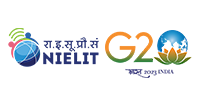Computer Programming Lab
|
1. Course Objectives: To provide skills for designing flowcharts and writing algorithms. To introduce students to the field of programming using the C language. To provide skills for writing C programs. To enable the students to debug programs. The latest platforms compilers are provided to the students to run their programs. |
|
|
2. Course Outcomes: Upon successful completion of the course/Lab the students will be able to |
|
|
CO1: Demonstrate an understanding of computer programming language concepts. CO2: Identify and abstract the programming task involved for a given problem. |
CO3: Design and develop modular programming skills. CO4: Trace and debug a program. |
|
3. Main Equipment’s/Software’s Available |
|
|
3.1 50 Dell desktops of core i7 Intel 3.60 connected to 24x7 1GBPS high-speed Internet connections. The Dell's Intel Core i7 Desktops are optimized for content streaming, with features like high-quality displays, advanced graphics, and fast connectivity. |
|
|
|
3.2 Sony VPL-EW246 Video Projector: The VPL-EW246 is economically designed with a compact body filled with energy and cost saving features. In addition, a variety of network functions, rich inputs and outputs are available. This model is an excellent choice for education and business.It is a compact data projector that delivers exceptional image quality with eco-conscious features. In addition, a variety of network functions such as web control, network presentation and wireless presentation from mobile device can be performed. |
|
3.3 Dev-C++ is a full-featured C and C++ Integrated Development Environment (IDE) for Windows platforms. Millions of developers, students and researchers use Dev-C++ since the first version was released in 1998. It has been featured in dozens of C++ and scientific books and remains one of the favorite learning tool among universities & schools worldwide. |
|
|
|
3.4 Turbo: Turbo coding is an advanced error correction technique used in digital communication systems to improve the reliability of data transmission over noisy channels.The decoding process typically employs an iterative algorithm, allowing the decoder to refine its estimates of the transmitted data by exchanging information between the decoders of the constituent codes. Turbo codes are known for their performance approaching the Shannon limit, making them highly effective in applications such as mobile communications, satellite transmissions, and data storage.
|
|
3.5 Visual Studio: Visual Studio Code (VS Code) is a free, open-source code editor developed by Microsoft, designed for building and debugging applications. It supports numerous programming languages and offers features like syntax highlighting, IntelliSense (smart code suggestions), integrated Git version control, and a powerful debugging environment. VS Code is highly customizable, allowing users to install extensions and themes to enhance functionality and tailor the editor to their workflow.
|
|
|
3.6 Sublime: Sublime Text is a sophisticated text editor designed for code, markup, and prose. Known for its speed and performance, it offers a clean and distraction-free interface, making it popular among developers and writers. Key features include multi-line editing, powerful search and replace functionality, syntax highlighting for various programming languages, and a wide range of customizable options through user settings and plugins.
|
|
|
4. Suggestive List of Experiments |
|
|
|
|
5. Suggested Books: |
6. References |
|
|
|
FACULTY COORDINATOR: Dr. L. Shyam Sundar Singh LAB INCHARGE: Ankita Sharma |
LAB CO-INCHARGE: Manoj Bairwa PLACE: Room#10, Ground Floor, CSED@NIELIT |


















